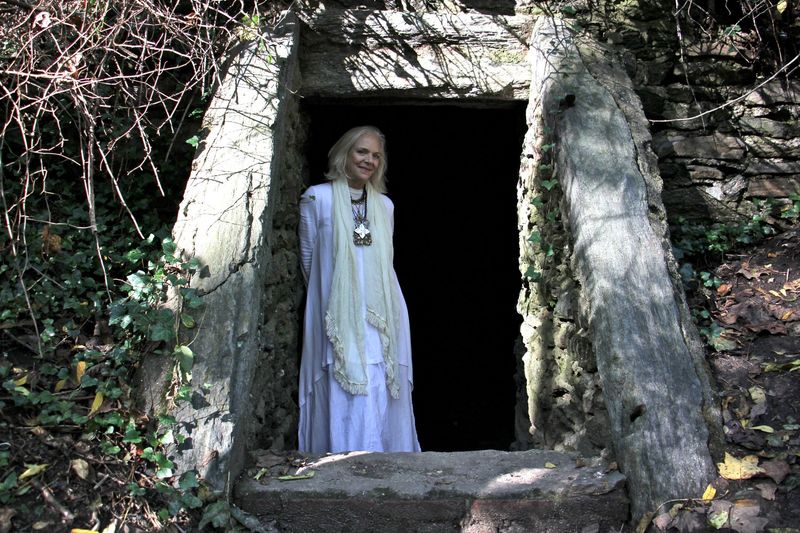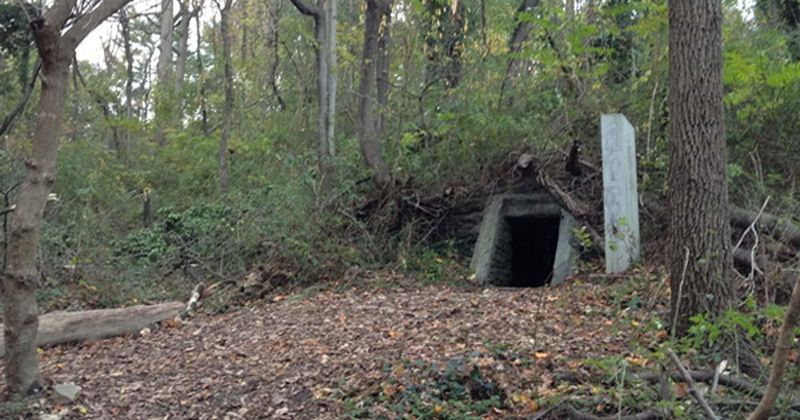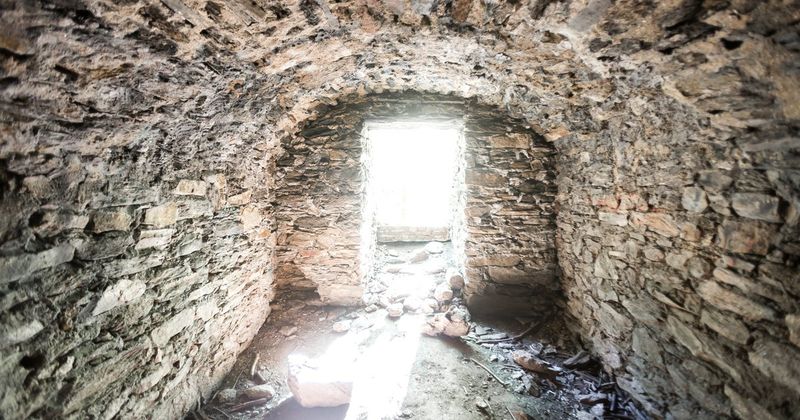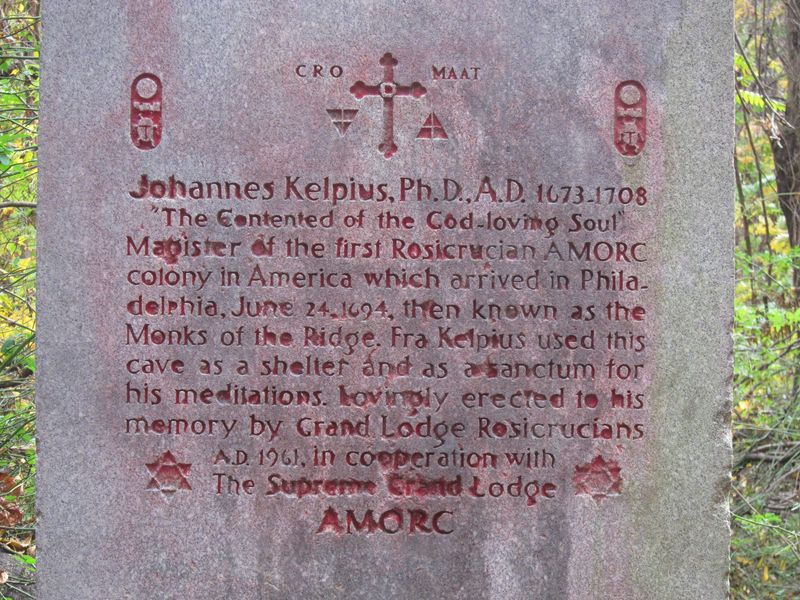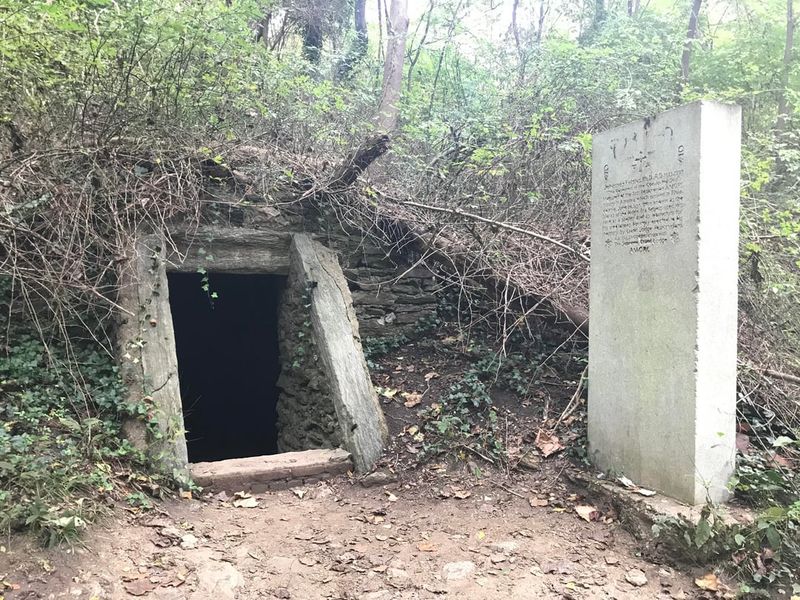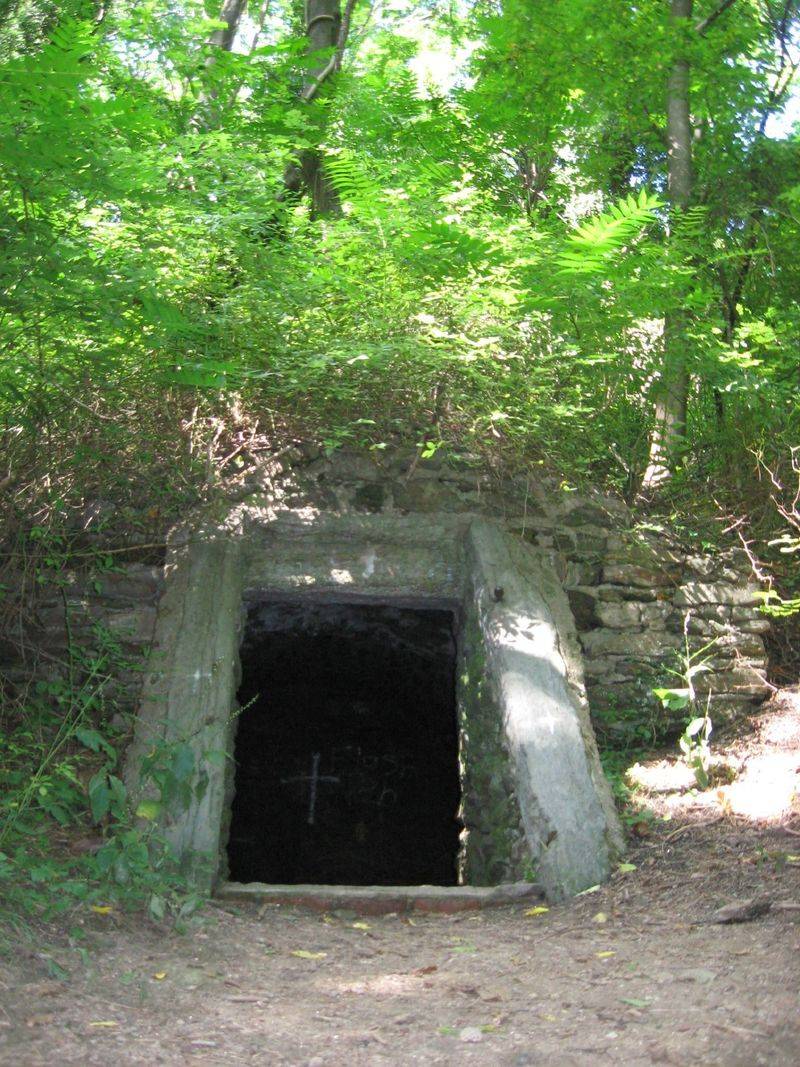Deep in the Wissahickon Valley of Philadelphia, a mysterious cave holds the story of America’s earliest doomsday believers. In 1694, a young German mystic named Johannes Kelpius led his followers into the Pennsylvania wilderness, convinced the world was about to end. They built a hidden community, studied the stars, and waited for a cosmic event that never came—yet their strange legacy lives on in the woods today.
A Remote Wilderness Refuge
Nestled along a hillside above Wissahickon Creek in Philadelphia’s Fairmount Park, the Cave of Kelpius sits in what feels like another world. Today, the area is quiet and secluded, marked only by a trail off Hermit Lane. Back in the late 1600s, this spot represented the very edge of civilization—true frontier wilderness.
When Johannes Kelpius arrived in 1694 at just 26 years old, he brought a band of devoted followers from Germany and Transylvania. They were searching for religious freedom and a place to await what they believed would be the end of the world. Pennsylvania, under William Penn’s tolerant colony rules, seemed like the perfect refuge.
Choosing this remote location wasn’t random. The group wanted isolation from society to focus on prayer, study, and preparation for the apocalypse they were certain was coming soon.
The Woman in the Wilderness
What’s fascinating is that Kelpius and his all-male group called themselves the Society of the Woman in the Wilderness. The name comes from the Book of Revelation, where a symbolic woman escapes into the wild to await divine rescue. They saw themselves as that woman—spiritually speaking.
These mystics were heavily into Pietist theology, which emphasized personal faith and direct experience with God. They also loved numerology and believed 1694 was a prophetic year when the apocalypse would arrive. Their daily routine was intense: simple living in woodland cabins, constant prayer, meditation, and stargazing.
But they weren’t just waiting around doing nothing. The group composed beautiful hymns, practiced medicine for local settlers, and studied astronomy and botany. They blended spiritual devotion with genuine scientific curiosity—a rare combination for their time.
Inside the Mystic’s Meditation Space
Here’s the truth about the famous cave: it’s not really a cave at all. What you see today is likely an old springhouse or root cellar carved into the hillside and reinforced with stone. Still, tradition insists this was Kelpius’s personal meditation spot, where he spent hours in study and solitary prayer.
Over the centuries, the site grew in legend and importance. In 1961, the Rosicrucian Order placed a granite monument at the entrance, honoring Kelpius as an early figure in American mysticism. Whether he was actually connected to the Rosicrucians remains historically unclear, but the symbolism stuck.
The cave represents something bigger than its modest size suggests. It’s a testament to early American religious experimentation—a place where mystic dreams, frontier isolation, scientific inquiry, and community service all collided in one strange, fascinating package.
Prophecy That Never Came True
Imagine preparing for the end of the world, only to wake up the next day and realize nothing happened. That’s exactly what Kelpius and his followers experienced when 1694 came and went without any cosmic catastrophe. Yet they didn’t just pack up and leave.
The community continued their practices in the valley for many more years. Kelpius himself lived there until his death in 1708 from tuberculosis, passing away at about 41 years old. After he died, the group slowly broke apart, with members drifting into the broader Pennsylvania community.
But their story didn’t vanish. The hymns they wrote, the legends they inspired, and the cave itself kept their memory alive. The site became a symbol not of failed prophecy, but of how faith, place, and identity shaped the American frontier experience in unexpected ways.
Walking Through History Today
Want to visit this piece of strange American history yourself? You can hike to the Cave of Kelpius by taking the trail off Hermit Lane into the Wissahickon Valley woodland. The walk brings you face-to-face with both nature and the past in a way few historic sites can match.
There’s something genuinely eerie yet peaceful about the place. The quiet woodland atmosphere feels appropriate for a site born from mysticism and apocalyptic expectation. Standing there, you can almost imagine what Kelpius felt centuries ago, gazing at the stars and waiting for divine signs.
The hike itself isn’t too difficult, but the terrain is natural and uneven. Bring good shoes and maybe a friend—the remote feeling of the location adds to its mystique. It’s a journey worth taking if you’re curious about America’s hidden spiritual history.
From Mystic to Legend
Kelpius’s story didn’t end with his death—it transformed into something even stranger. Throughout the 1800s, American writers reimagined him as a romantic, even gothic figure. Novels portrayed him as a “weird wizard” living at civilization’s edge, practicing mysterious arts in the Pennsylvania woods.
This literary legend says a lot about how Americans viewed their own religious past. The blend of European mysticism, frontier wilderness, and unfulfilled prophecy made for irresistible storytelling. Kelpius became a symbol of spiritual seeking, isolation, and the strangeness lurking in early American history.
Modern spiritual movements have also claimed him as an ancestor, particularly groups interested in esotericism and alternative religion. Whether historically accurate or not, these connections show how the Cave of Kelpius continues to inspire people searching for meaning beyond mainstream traditions.
Why This Cave Still Matters
So why should anyone care about a small cave and a failed doomsday prediction from over 300 years ago? Because the Cave of Kelpius represents something uniquely American: the freedom to believe differently, even strangely.
Kelpius and his followers came to Pennsylvania seeking religious tolerance and found it. They practiced their mysticism without persecution, contributed to their community through medicine and music, and left behind a legacy that challenges our assumptions about early America. We often picture the colonies as strictly Puritan or Anglican, but places like this cave remind us the reality was far more diverse and interesting.
The site connects wilderness, prophecy, science, and aspiration in ways that still resonate. Standing where these mystics once waited for the world to end, you’re touching a strange but genuine piece of American identity—one that deserves to be remembered.

